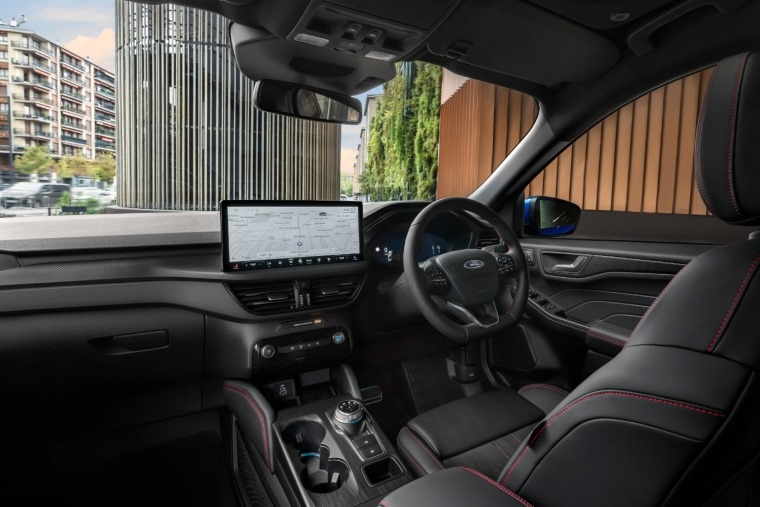Ford Kuga Self-Charging Hybrid vs Plug-In Hybrid: Which is best for you?
The latest version of the Ford Kuga is a fantastic family crossover that offers good looks, a fun driving experience and some of the latest hybrid tech that maximises efficiency and economy.
With impressive space and a top-notch interior, it’s a car that finally stands out in a crowded marketplace. As well as a 1.5-litre petrol motor, the Kuga is available with a choice of two 2.5-litre hybrids.
In this article, we’re going to look at the difference between the two to help you work out which would suit your requirements best. Let’s jump into it.

So what’s the difference?
Hybrids are complicated things – both technologically and to understand. There are several types including self-charging full electric hybrids, mild hybrids and plug-in hybrids. The Kuga offers both a full self-charging model (FHEV), as well as a plug-in (PHEV).
Both feature a torquey 2.5-litre petrol engine and an automatic gearbox. The difference lies in their battery packs. The self-charging car gets a compact 1.1kWh pack, while the plug-in model gets a larger 14.4kWh unit.
This essentially means the the plug-in variant can offer an impressive electric-only range – 42.3 miles according to the official stats. The self-charging model however, utilises its electric powertrain in shorter bursts, but is constantly being recharged by the petrol motor.

Do they feel different behind the wheel?
One thing you need to know about the new Kuga is that it is fantastic to drive. Fords have long had a reputation for offering an engaging driver experience, and with sharp handling and direct steering, the Kuga is no exception to this.
While hybrids are traditionally thought of as heavy, the Kuga range is actually lighter than it’s ever been thanks to shedding 90kg compared with the old model.
But there are some differences between the two. The self-charging version is available in both front-wheel drive and all-wheel drive form, with the latter producing slightly more power and getting from 0-62mph in 8.3 seconds – almost a second quicker than the front-wheel drive model.
The PHEV is also available with front-wheel drive and all-wheel drive, but offers a boost in power; 243hp compared to the self-charging model’s 180hp. The result is a quicker 0-62mph time of 7.3 seconds and a slightly higher top speed.
It’s also worth noting that both models feature a class-leading towing capacity of 2,100kg.

What’s the difference in efficiency?
Both these hybrids have their own attributes, with the pair offering efficiency that is on par with or exceeds rivals. First, let’s look at the self-charging model.
While it features a smaller battery pack, the way it switches seamlessly between its electric motor and 2.5-litre petrol engine results in an average of around 50mpg – impressive for a car of this size.
On the face of it, the plug-in seems like it has this one in the bag. According to official stats, you can expect an astounding 201mpg. But in the real world, this is likely to drop to levels similar to the self-charging hybrid.
However, its larger rechargeable battery pack means that shorter journeys can be completed without engaging the petrol engine at all, making it an ideal commuting car and perfect for those that do a lot of short journeys.

So which version is for me?
It’s important to consider what’s important to you before deciding between these two models. The plug-in sounds like a fantastic proposition, but to take advantage of its tech, you ideally need a home charge point. For those without a garage or driveway might find it’s not worth it.
It’s also more costly in the first instance, so it’s worth thinking about whether the extra money you pay for the car will be offset by savings when it comes to fuel bills. Its 8% BiK rate certainly makes it the more attractive of the pair for business users, too.
The self-charging hybrid also makes sense, being exceptionally economical. However, if you have access to a charger at home, we think the plug-in model comes out on top overall. With 42.3 miles of range, you can treat it as an EV on the commute, while reserving the petrol engine for longer trips at the weekend.
